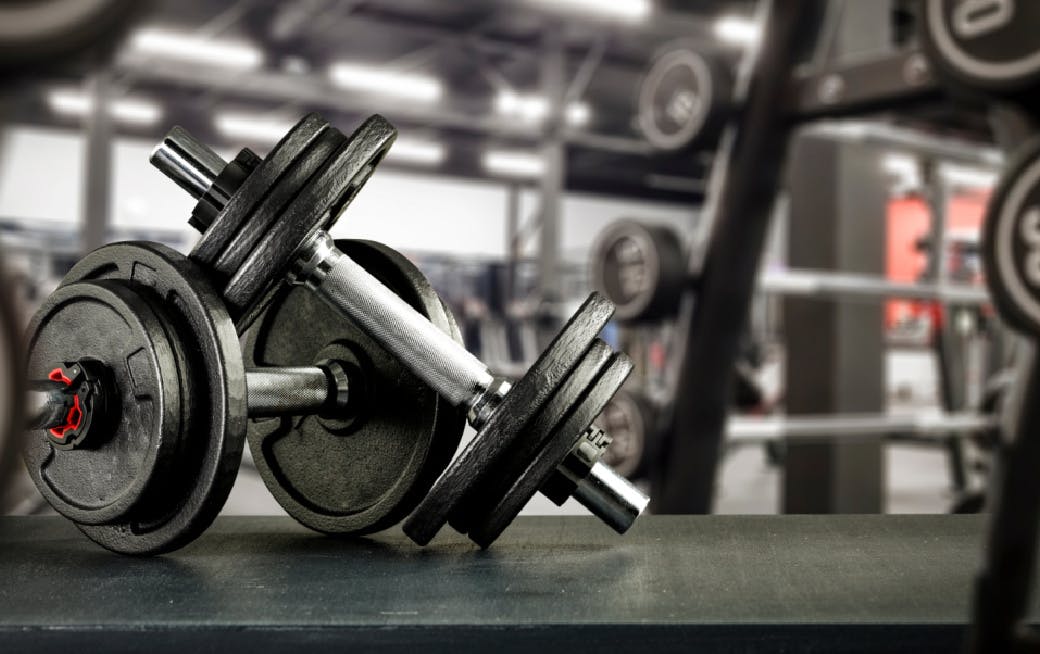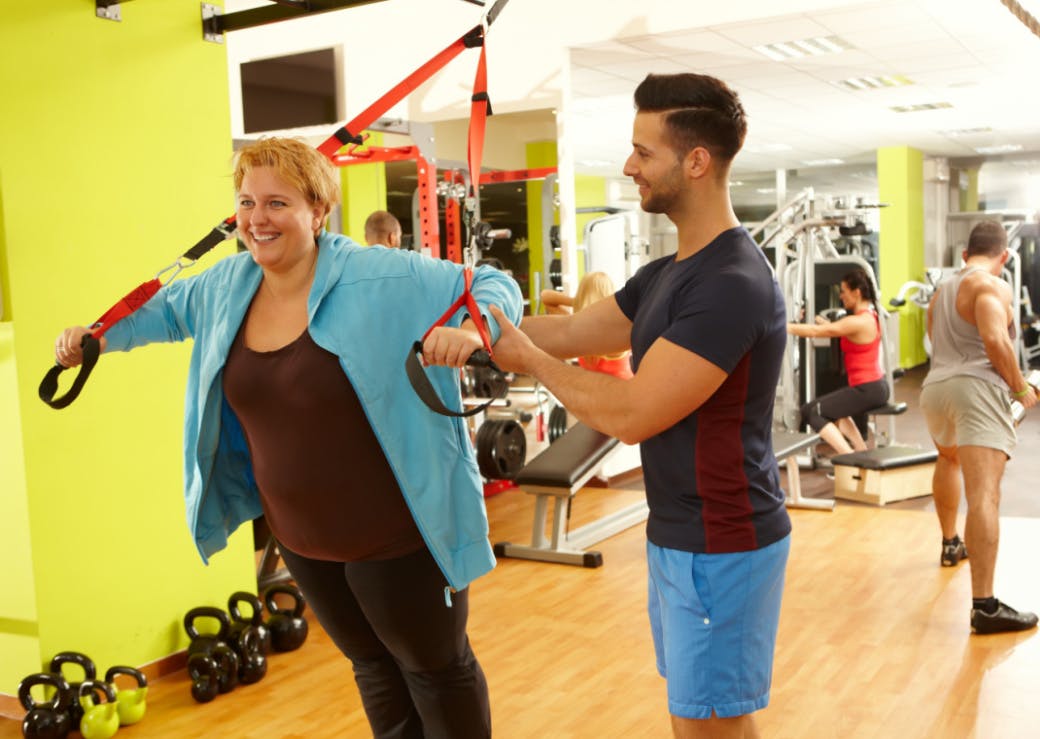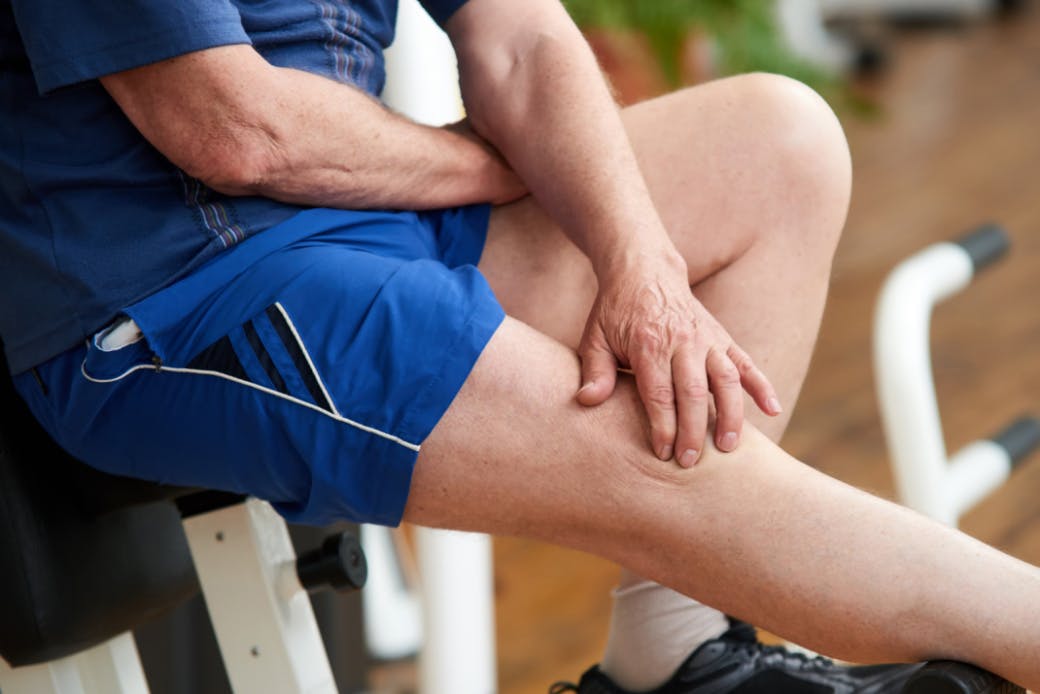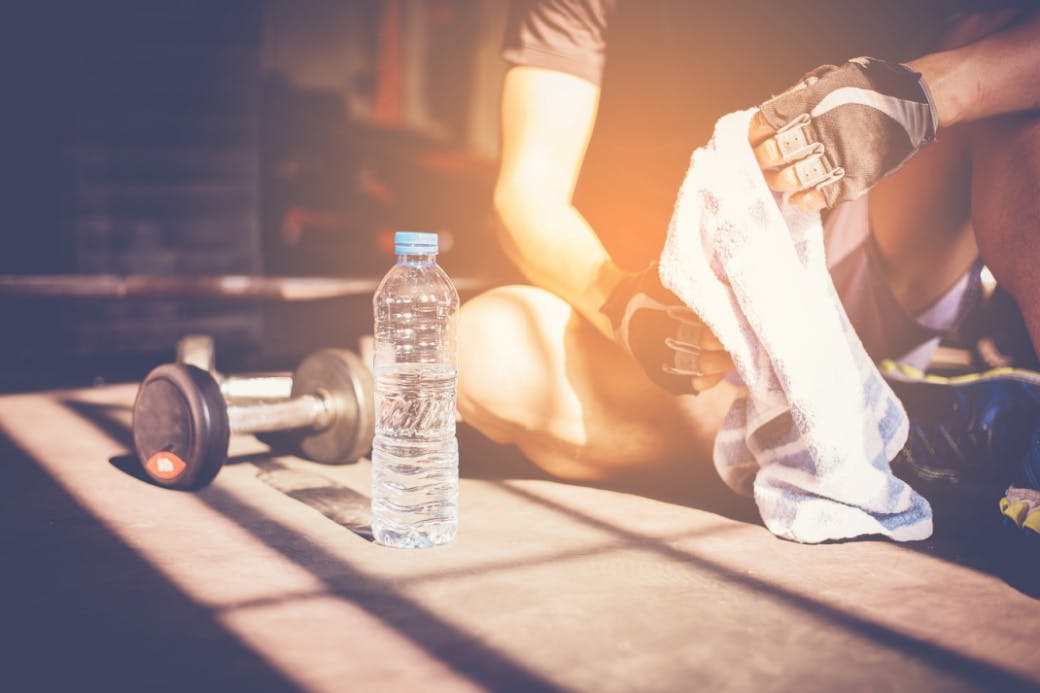How to Prevent Injury at the Gym

Regular exercise is a great way to boost your energy, strength, and overall health. But while getting in shape is a worthy goal for anyone, it can also lead to injury.
So what should you do to minimize the risk of getting hurt while working out? Here’s how to prevent injury at the gym.
Find a Personal Trainer

One of the best ways to start your fitness journey is to enlist a little help from a pro. A qualified personal trainer will show you how to avoid the classic mistakes so many gym-goers make. Even just a few hour-long lessons with a professional can make your workouts that much safer for years to come.
A personal trainer can also teach you what exercises are best suited to your body type, helping you further ward off injury and maximize your results.
Never Work Out on an Empty Stomach
Working out can put your body through some intense stress, and you’ll need to make sure it has the fuel to get the job done. Pushing yourself too far on an empty stomach could limit the function of your body and mind, increasing the risk of injury.
You shouldn’t eat a big meal right before heading to the gym, either. Instead, eat the right foods one to two hours before your workout to ensure that your body has had time to digest the carbs and protein your body needs to reach its full potential.
Some good pre-workout foods include:
- Bagels
- Fresh fruit
- Yogurt
- Baked potato
- Energy bar
- Oatmeal
- Bread with peanut butter, lean meat, or cheese
- Certain cereals
- Pasta with tomato sauce
As a general rule, you should avoid foods high in sugar or fat, such as:
- Doughnuts
- Fries
- Potato chips
- Candy
- Chocolate
- Red meat
These types of food could cause cramping, stomachaches, and nausea during a workout.
Choose the Right Exercises

Preventing injuries at the gym is all about knowing your limits. You’re not going to the gym just to show off. (Or at least, you shouldn’t be.) One of the best ways to avoid gym injuries is to know what your body is up for.
That can mean avoiding certain advanced exercises until you have more experience, but it can also mean choosing workouts that are best suited to your strengths and weaknesses. If you know what parts of your body are more vulnerable, then you can avoid activities that would put undue strain on them.
For example, if you have knee problems, you may want to avoid steppers, treadmills, and leg presses. If you have a bad back, deadlifts and barbell rows may not be the best idea.
Factor any limitations you’re aware of into your workout routines, and you can get in shape without making any existing issues worse.
Learn the Proper Technique

No matter which exercises you try, always make sure you have the correct form down pat before you get started. Using the wrong technique makes your workouts less efficient and can lead to injury.
Don’t just assume, either. Gyms are full of people who think they know how to perform an exercise only to find out how mistaken they were after an injury.
Use a personal trainer or look into instructional materials online and elsewhere to make sure you know exactly what you’re doing.
Start Slow
When building a new exercise habit, it’s easy to push yourself too far too fast. That might feel good at first, but it isn’t sustainable, and your body won’t thank you in the long run. You’ll only overload yourself, resort to poor techniques, and invite injury. And once you’ve injured yourself, you’ll set your progress back by however long it takes you to recover.
In the gym, shortcuts have a way of turning into extended detours.
So start at your level and work your way up slowly. Don’t worry about how much you’d like to lift or how far you’d like to run on the treadmill, just do what you can for now. With time, you’ll get to where you want to be.
Warm Up
Even if you’re in excellent shape already, you still have to warm up before intense exercise. Cold muscles are much more likely to get strained, sprained, and even torn. A proper warm-up will improve blood flow to your muscles and reduce any stiffness.
Always warm up for at least 10 minutes before your main workout routine. Dynamic warm-ups—such as jogging, using resistance bands, or doing moving stretches such as leg lifts—are generally best. Passive stretches in which you hold a position could cause muscle tearing.
If your workout is going to include heavy exercises such as bench presses and deadlifts, opt for a more comprehensive warm-up.
Focus and Stay Vigilant
While some workouts may seem like the perfect time to get lost in your music and drift away, you never want to become too distracted. Keep your focus on the task at hand to make sure everything is going according to plan. Maintain the proper form and technique, and make sure you aren’t getting careless.
And remember: concentrating on your workout doesn’t mean ignoring everyone else around you. You should also be aware of your surroundings so you can avoid endangering yourself or others. Even if you’re paying attention, that doesn’t mean everyone else is.
Hydrate

Working out means sweat, and sweat drains essential fluids from your body. Try to drink 16 ounces of water before working out, then continue drinking throughout the workout to replace the fluids you lose.
Ideally, you should take a few sips of water every 15 minutes throughout your routine. Setting that kind of regular schedule can help keep you hydrated better than just waiting until you’re thirsty to reach for the water bottle.
Listen to Your Body
“No pain, no gain” may be one of the worst fitness mantras ever created. Efficient workouts are often hard and uncomfortable, but once you veer into the territory of “pain,” something has gone wrong. In fact, not only is pain—and the injury it may signal—not necessary for making progress, but it may ultimately hold your gains back by forcing you to take a break and recover.
Overtraining can do more harm than not training enough.
If you feel any pain, such as a cramp or sharp tweak during your workout, give yourself a rest. Consider lowering your weights or moving on to another muscle group. Treating your body kindly will serve you far better than abusing it.
Pain isn’t the only sign that you may need to stop, either. No matter how much you set out to do, once your body is telling you it’s had enough, pay attention. Quit while you’re ahead. Every time you come back, you’ll be able to go a little farther than you could before.
Slow and steady wins the race.
Cool Down
Cooling down at the end of a workout can be as important as warming up beforehand. Once you’ve finished with the machines or put your dumbbells back on the rack, take a little time to bring your body back down to a more restful state.
Take a slow walk or stretch gently for five to ten minutes in order to keep your muscles from stiffening up.
Switch It Up

Variety is the spice of life. While doing one exercise over and over will certainly help you perfect it, it can also set you up for gym injuries such as shin splints, tendinitis, and other painful problems. Vary your routine by focusing on different muscle groups on different days or alternating between cardio and weight exercises.
It's also important to give muscles adequate rest between workouts. Tired muscles are always more prone to injury. Find the right cadence for your workout schedule to give your muscles the time they need to recover and rebuild.
Have You Been Injured at the Gym?
By following these tips, you should be able to get the most out of your workouts without putting yourself in any unnecessary danger. However, no matter how careful you are, accidents can still happen.
If you’ve been injured at the gym, you may be entitled to compensation—and we can help you get it. For decades, the SiebenCarey team has helped thousands of personal injury victims get the compensation they need. Just contact us, and we can:
Evaluate your case
Explain your rights to you
Investigate the details of your injury
Help you recover every dollar of compensation you’re owed












